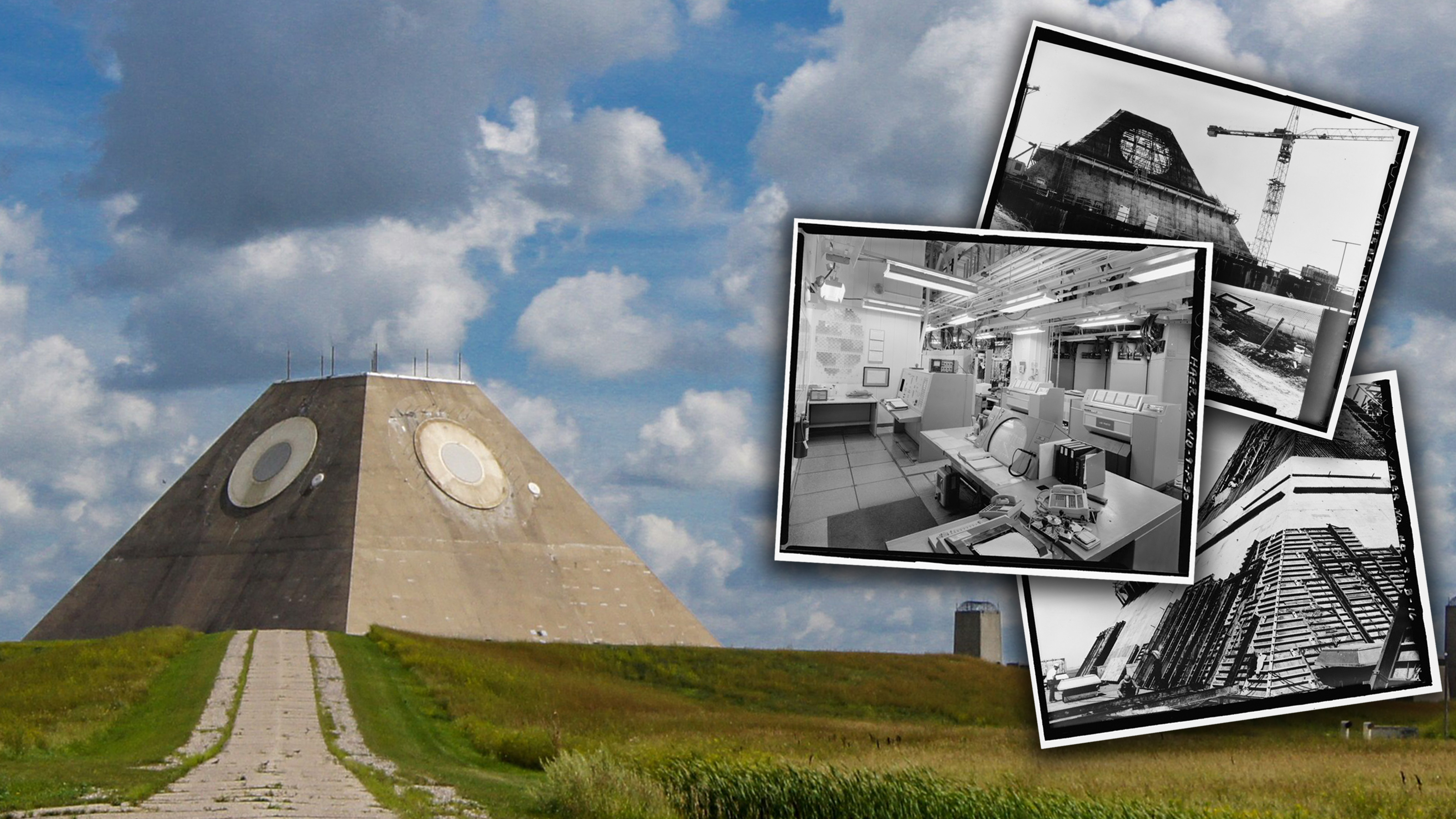

Deep in the farmland of North Dakota sits an ominous and massive concrete pyramid, with large circles on all four faces. It wasn’t built by an ancient civilization or aliens; it was built by the U.S. Army, and it played a pivotal part in the Cold War.
The Stanley R. Mickelsen Safeguard Complex is located near Nekoma, North Dakota, closer to the Canadian border than to its nearest U.S. city, Grand Forks, which is about 100 miles away. Although the harsh winters make the pyramid look like it’s on the Star Wars planet, Hoth, it’s actually in a town populated with only 30 people, according to the U.S. Census Bureau.
It was built in the early 1970s as the central radar and control center for an array of defensive missiles across the prairie that would shoot down incoming Russian nuclear missiles. The pyramid itself cost close to $140 million — or $800 million in today’s dollars. The missile system it controlled, known as Safeguard, cost $5.7 billion — or $32 billion today, roughly the cost of three nuclear aircraft carriers.
The system was declared fully operational in October 1975.
It was shut down in April 1976.
Still, the pricey Mickelsen Safeguard Complex may have been worth the cost in geo-political terms. During the five years of its construction, the mere threat of the system’s eventual capabilities jump-started negotiations between the U.S. and the Soviet Union over limiting systems like Safeguard — a major crack in Cold War arms control.
“It is believed that the plans for deployment and initiation of construction of this facility were instrumental in obtaining Soviet agreement to the Anti-Ballistic Missile Treaty and a subsequent decline in Cold War hostilities between the Superpowers,” reads a historic engineering record of the complex compiled in 1996 by the National Park Service.
Subscribe to Task & Purpose today. Get the latest military news and culture in your inbox daily.
According to the Park Service history, over 1,000 construction workers started building the safeguard complex on April 6, 1970. The thick layers of cement and steel enabled it and its towers to withstand a nearby nuclear blast.
The MCS was the hub of a system designed to shoot down incoming intercontinental ballistic missiles. The pyramid’s radar arrays on its north-facing sides had the capability to detect incoming ICBM missiles several hundred miles out. Crews and computers within the complex would then launch one of the 30 Spartan missiles or 16 Sprint missiles which were arrayed across the state to destroy the incoming nuclear warhead.
Over the next decade, it was slowly decommissioned and emptied out of anything valuable. Its 16 staircases and support beams were removed to prevent people from climbing the various floors within the pyramid, and all the sensitive equipment and missiles were transported to other bases.
Another radar center in the Safeguard chain, Cavalier Space Force Staton, is still active, but the MCS has long been cold and abandoned. It’s also undergone several rounds of costly environmental clean-ups, removing millions of gallons of contaminated water from its basement structures.
The Army sold the property long ago and it has changed hands several times. A North Dakota community of Hutterites — an Anabaptist religious branch whose followers live in largely self-contained communities similar to Mennonite or Amish groups — bought the complex in 2012 for $530,000. Local development officials bought it back in 2017 with hopes of turning it into an industrial site, a plan that seemed to find a taker in 2022 from the complete opposite end of the technology spectrum than the Hutterites: cryptocurrency.
In July 2022, Gov. Doug Burgum — appointed this month by President-elect Donald Trump to run the Department of the Interior — announced that Bitzero Blockchain, Inc. would purchase the whole property to build a secure data center.
However, more than two years later, there is very little evidence that Bitzero has made any progress at the site. Calls by Task & Purpose to numbers associated with Bitzero’s headquarters in Canada were not returned. State officials have made no further announcements about the site but told North Dakota media that state funds that had been promised for the site had so far not been used.
